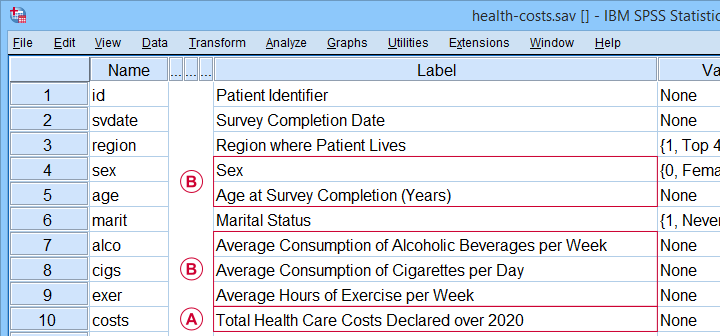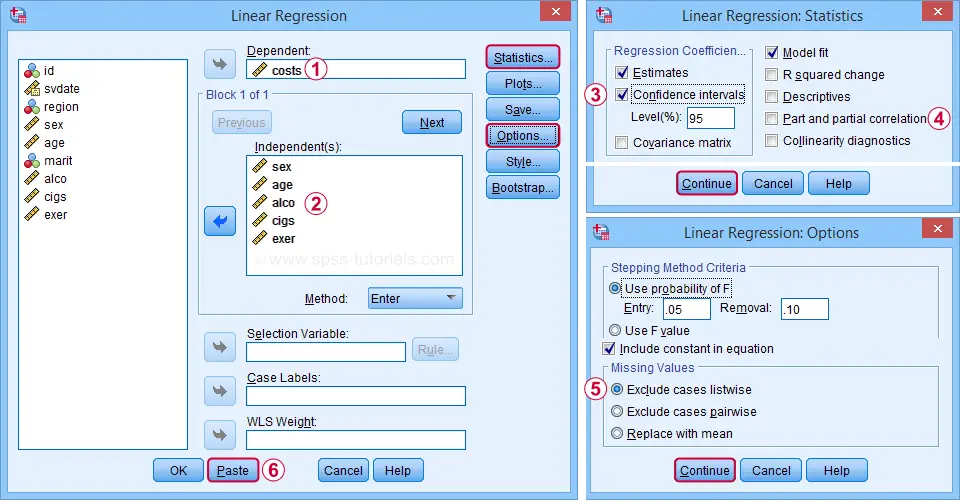How to Get Experienced SPSS Tutors for Custom Assignment Support|2025
/in SPSS Articles /by BesttutorLearn how to get experienced SPSS tutors for custom assignment support. Receive personalized, expert assistance tailored to your specific needs, ensuring accurate solutions and academic success in your SPSS assignments.
SPSS (Statistical Package for the Social Sciences) is a powerful statistical analysis software used by researchers, data analysts, and students across various fields, including social sciences, psychology, healthcare, education, and market research. Due to its complexity and wide range of functionalities, many individuals seek expert guidance to navigate the intricacies of SPSS, especially when faced with assignments or research projects that require statistical analysis.
This paper will explore how individuals can obtain experienced SPSS tutors for custom assignment support, the importance of seeking professional help, and how SPSS proves to be an invaluable tool for researchers. Keywords such as “Can I pay someone to do an SPSS analysis?”, “How to get help with SPSS?”, “How is SPSS useful for researchers?”, and “Do my SPSS homework for me?” will be addressed within the context of securing expert tutoring and assistance.
The Importance of SPSS for Researchers
SPSS has become a staple tool for researchers in various fields because of its user-friendly interface and its ability to perform complex statistical analyses. For researchers, SPSS is crucial in tasks such as data cleaning, data transformation, data visualization, and statistical testing. The software enables users to analyze data sets with multiple variables, perform regression analysis, test hypotheses, and create detailed reports. Researchers often use SPSS to analyze survey data, experimental results, and longitudinal studies, among other types of data.
One of the main advantages of SPSS is its versatility and the variety of statistical procedures it offers. It can handle everything from basic descriptive statistics (like means and standard deviations) to more advanced analyses, such as factor analysis, multivariate analysis of variance (MANOVA), and structural equation modeling (SEM). Researchers in psychology, sociology, medicine, and business regularly rely on SPSS to process large volumes of data and extract meaningful insights. Given its significance in academic and professional research, it is no surprise that many students and professionals seek support when tasked with SPSS assignments or research projects.
Why Seek Help with SPSS?
Students and professionals may encounter various challenges while working with SPSS, particularly when faced with complex analyses or unfamiliar statistical concepts. SPSS, despite its user-friendly interface, can still be intimidating for those without a strong background in statistics or data analysis. This leads to the question: How to get help with SPSS?
There are several reasons why individuals might seek help with SPSS:
- Lack of Expertise: Many students and professionals may not have sufficient knowledge of statistical methods or the software’s functionality, leading them to struggle when performing analyses.
- Time Constraints: For students, balancing coursework, personal responsibilities, and other academic obligations can leave little time to master SPSS or complete assignments that require the software.
- Need for Precision: SPSS analyses often require a high level of precision and understanding of statistical concepts. If results are incorrectly analyzed or interpreted, it can affect the validity of research findings, which is why professional assistance is sometimes necessary.
- Complex Assignments: SPSS assignments can involve a variety of tasks, including data preparation, analysis, and interpretation. These tasks may require more experience than a student possesses, prompting them to seek help.
- Understanding Output: After performing an analysis, SPSS generates detailed output with tables, graphs, and statistical results. Interpreting this output correctly requires knowledge of statistical principles, which many students find challenging.
To address these issues, students and professionals often turn to SPSS tutors or experts who can provide assistance with understanding the software, conducting analyses, interpreting results, and offering support with assignments.
Can I Pay Someone to Do an SPSS Analysis?
The question, Can I pay someone to do an SPSS analysis?, is a common one among students facing difficulty with their assignments or research projects. In many cases, students wonder whether they can outsource their SPSS work to experts who can deliver quality results within the specified timeframe. The answer is yes—there are many reliable services available that offer professional SPSS assignment help and analysis for a fee. These services provide students with access to experienced tutors, statisticians, and data analysts who can assist with tasks ranging from basic statistical analyses to complex data modeling.
However, when opting to pay for SPSS analysis support, students must ensure that they choose reputable service providers. There are numerous websites and online platforms that connect students with SPSS tutors, but not all of them offer high-quality support. It is essential to look for platforms that specialize in SPSS tutoring, have verified experts on staff, and provide guarantees for plagiarism-free work. Some platforms also allow students to review tutors’ profiles and ratings to ensure they select an expert with the right skill set and experience.
Another benefit of hiring someone to do SPSS work is that students can learn from the process. Many tutoring services not only provide completed assignments but also offer explanations of the analysis, which helps students understand the steps involved in performing the analysis and interpreting the results.
How to Get Help with SPSS?
Getting help with SPSS is easier than ever thanks to the growing number of online resources available to students and researchers. Here are several ways to obtain assistance:
Online SPSS Tutoring Services
Numerous tutoring services offer personalized SPSS help, where students can directly interact with experts in real-time. These platforms often allow students to communicate their specific needs, such as assistance with data entry, performing particular analyses, or interpreting results. Services like GetSPSSHelp, Chegg, Tutor.com, and Wyzant provide access to professional SPSS tutors who can assist with assignments, guide students through analyses, and explain complex concepts.
Academic Help Websites
Many websites offer professional assistance specifically for SPSS-related assignments. These platforms typically offer custom assignment solutions, where students can upload their data or assignment instructions, and an expert will complete the work according to their specifications. Websites such as Assignment Expert or SPSS Assignment Help allow students to get help with tasks ranging from basic statistical tests to more complex analyses.
University Resources
Some universities provide resources to help students with SPSS. For example, academic support centers often offer workshops, drop-in tutoring sessions, and access to tutors with expertise in statistical software. Students may also be able to find peer tutoring programs, where more advanced students assist others with SPSS problems.
Forums and Online Communities
Forums and online communities, such as Stack Exchange and Reddit, host vibrant communities of SPSS users who can offer advice, tips, and solutions to common problems. While not the same as paid tutoring, these platforms can be useful for quick questions and guidance on specific SPSS issues.
Freelance Platforms
Freelance platforms like Upwork and Fiverr connect clients with experts across various fields, including SPSS analysis. By hiring an SPSS expert from these platforms, students can receive customized assistance for specific projects, ensuring they get help tailored to their exact needs.
Online Courses
There are numerous online courses and tutorials available to help individuals learn SPSS at their own pace. Platforms like Udemy, Coursera, and LinkedIn Learning offer both free and paid courses on SPSS basics and advanced techniques. These courses can be an excellent option for students who want to gain a deeper understanding of the software before attempting more complex tasks.
Do My SPSS Homework for Me?
Another common query students have is: Do my SPSS homework for me? It is important to note that paying someone to do your SPSS homework can be a viable option when you find yourself struggling with an assignment. However, students should choose tutors or services that are committed to academic integrity and learning. Some services may offer completed assignments for a fee, but ideally, these services should also provide educational support, allowing students to learn the underlying statistical principles and processes.
When asking someone to do your SPSS homework, ensure that the service you select provides:
- Detailed explanations of how the analysis was performed.
- Step-by-step breakdowns of data manipulation and output interpretation.
- Plagiarism-free content, ensuring that the work is original and tailored specifically to your assignment.
While outsourcing homework is an option, students should use these services responsibly and not rely on them for every assignment. It is always beneficial to make the effort to learn the material so you can apply SPSS in future research or academic work.
Conclusion
In summary, SPSS is an invaluable tool for researchers and students involved in statistical analysis. However, mastering SPSS can be challenging, especially when faced with complex assignments or unfamiliar statistical methods. Fortunately, there are various ways to get help with SPSS, from online tutoring services and academic support websites to freelance platforms and university resources. Students can even pay professionals to do SPSS analyses or complete their homework.
The key to making the most of these services is choosing reputable, reliable platforms that offer not just solutions but also valuable learning opportunities. Whether you are asking, Can I pay someone to do an SPSS analysis?, How to get help with SPSS?, How is SPSS useful for researchers?, or Do my SPSS homework for me?, the ultimate goal should be to build a solid understanding of the software and its applications in order to succeed academically and professionally.
Needs help with similar assignment?
We are available 24x7 to deliver the best services and assignment ready within 3-4 hours? Order a custom-written, plagiarism-free paper




























